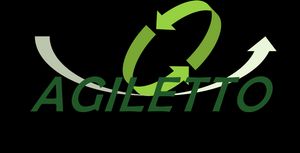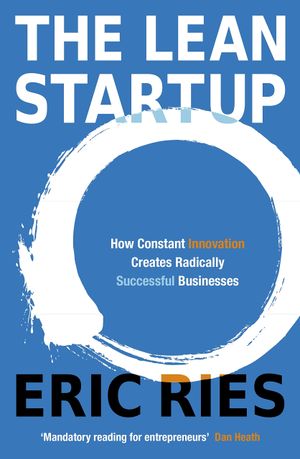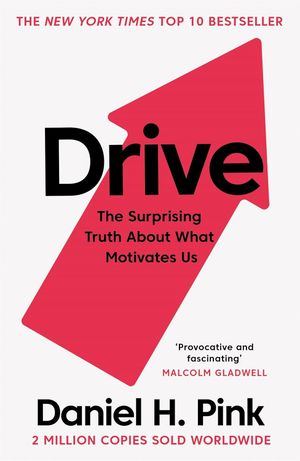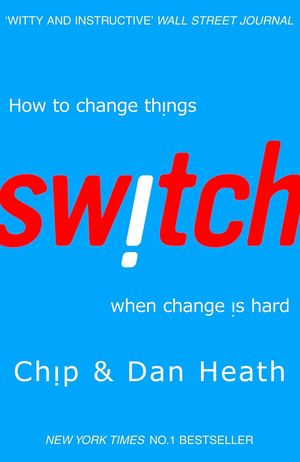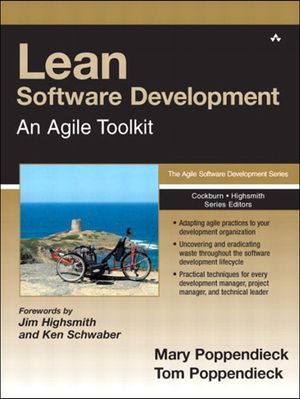Top 5 Must-Read Books for Continuous Learning in Agile 2024
Whether relaxing in a hammock, lounging by the pool, or taking a break from work, summer is the perfect time to dive into some transformative reads. Continuous learning is the key to Agile success, and what better way to enhance your knowledge than by exploring some of the best books on the subject? Here are five must-read books, which I consider Agile classics, to help you and your organization embrace continuous learning and drive Agile excellence.
Continuous learning occurs not only on an individual basis but also at a team and organizational level. But now, let's focus on your personal learning. So, let's do it!

1. "The Lean Startup" by Eric Ries
In the list of books, I start with what I consider a must-read. I have personally read it several times, owning both the ebook and the paperback, each extensively read and used as a reference.
Summary: Ultimately, the Lean Startup methodology is about rapidly discovering what works and discarding what doesn’t to foster continuous improvement and innovation. Eric Ries presents this approach, emphasizing the importance of iterative cycles of building, measuring, and learning. Although the book is written with startups in mind, these principles extend way beyond startups. They can be applied to various fields, including government programs, healthcare, and solving global challenges, virtually everything we do. The book is a light read that fits well in the hammock with a glass of ice water.
Key Takeaways:
- Build-Measure-Learn feedback loop
- Validated learning through experimentation
- Pivot or persevere based on data
Quote: “We must learn what customers really want, not what they say they want or what we think they should want.”
Why It’s a Must-Read: This book is foundational for understanding how continuous learning and iterative processes are critical to Agile success. It's perfect for anyone looking to understand why Lean principles go hand-in-hand with Agile practices.
2. "Drive: The Surprising Truth About What Motivates Us" by Daniel H. Pink
This book is a deep dive into the science of motivation, revealing what truly drives us to achieve and succeed.
Summary: Daniel Pink delves into the science of motivation, emphasizing the importance of autonomy, mastery, and purpose in achieving high performance and satisfaction. He argues that traditional incentives are less effective than intrinsic motivation, which can drive individuals and organizations to greater heights.
Key Takeaways:
- The three elements of intrinsic motivation: autonomy, mastery, and purpose
- Strategies for creating environments that foster motivation and engagement
- Practical advice for applying motivational principles in the workplace
Quote: “Control leads to compliance; autonomy leads to engagement.”
Why It’s a Must-Read: Motivation is key to continuous learning and improvement. This book provides valuable insights into creating a culture that encourages continuous learning and innovation, making it essential for anyone looking to enhance their Agile practices and foster a motivated, high-performing team.
3. "Switch: How to Change Things When Change Is Hard" by Chip and Dan Heath
This book explores the complexities of change and offers a simple yet effective framework for making change happen.
Summary: Chip and Dan Heath explore the psychology of change, explaining why change is difficult and how to overcome the obstacles to making lasting change. They introduce a simple framework for implementing change by aligning the rational and emotional aspects of the human mind.
Key Takeaways:
- The framework of the Rider (rational mind), the Elephant (emotional mind), and the Path (environment)
- Strategies for motivating both the rational and emotional sides of people
- Techniques for shaping the path to make change easier
Quote: “For things to change, somebody somewhere has to start acting differently. Maybe it's you, maybe it's your team.”
Why It’s a Must-Read: Understanding how to effectively implement change is crucial for Agile teams and organizations. This book provides practical insights into the psychology of change, offering strategies to overcome resistance and drive successful transformations. It's a valuable resource for anyone looking to foster a culture of continuous improvement and adaptability.
4. "Project to Product: How to Survive and Thrive in the Age of Digital Disruption with the Flow Framework" by Mik Kersten
This book offers a revolutionary approach to transforming traditional project management into a value stream-centric model.
Summary: Mik Kersten outlines a revolutionary approach to transforming traditional project management into a value stream-centric model using the Flow Framework. By shifting focus from projects to value streams and products, organizations can enhance their agility and responsiveness to market demands.
The Flow Framework might not be the best part of this book according to me; however, the first part is a must-read.
Key Takeaways:
- The importance of organizing around value streams
- Strategies for aligning teams with business goals and customer value
Quote: "By organizing around value streams*, we can enable teams to take ownership of end-to-end delivery of the product and business capabilities that support their value streams. Teams can then focus on achieving a shared mission, and the value of their work is measured by the impact it has on their value stream."*
Why It’s a Must-Read: Transitioning from project-based to product-based thinking is essential for thriving in today's digital age. This book provides a comprehensive guide to making this shift, helping organizations to become more adaptive, customer-focused, and innovative. It's a crucial read for anyone looking to understand how to organize a large organization for flow.
5. "Lean Software Development: An Agile Toolkit" by Mary Poppendieck and Tom Poppendieck
Summary: Mary and Tom Poppendieck’s classic work introduces Lean principles to the software development world. This book is essential for understanding how to apply Lean thinking to Agile practices, eliminating waste, and focusing on value delivery. One of the key insights from this book is the interpretation of waste in the waterfall process, where "every step in the waterfall process except analysis and coding is waste."
Key Takeaways:
- Seven Lean Principles: Understanding and applying the seven principles of Lean thinking—eliminate waste, build quality in, create knowledge, defer commitment, deliver fast, respect people, and optimize the whole.
- Waste Elimination: Techniques to identify and eliminate waste in software development processes.
- Focus on Value: Strategies to focus on delivering value to customers and continuously improving processes.
- Practical Tools: Tools and practices for implementing Lean principles in software development, such as value stream mapping and pull systems.
Quote: “With our definition of waste, we can interpret Royce’s comment to indicate that every step in the waterfall process except analysis and coding is waste.”
Why It’s a Must-Read: This book is foundational for understanding Lean principles and how they intersect with Agile practices. It provides practical guidance on eliminating waste and focusing on delivering value, making it an essential reading for any Agile practitioner. By integrating Lean thinking into Agile practices, teams can enhance efficiency, reduce waste, and deliver higher customer value. The insights and tools offered by the Poppendiecks are invaluable for anyone committed to continuous improvement and excellence in software development.
Conclusion
As you enjoy your well-deserved break, take the opportunity to immerse yourself in these insightful books. Each offers valuable lessons and practical advice on continuous learning and Agile practices. By embracing the principles outlined in these reads, you can drive success and innovation within your organization. Happy reading!
Last updated Sep 3, 2024
